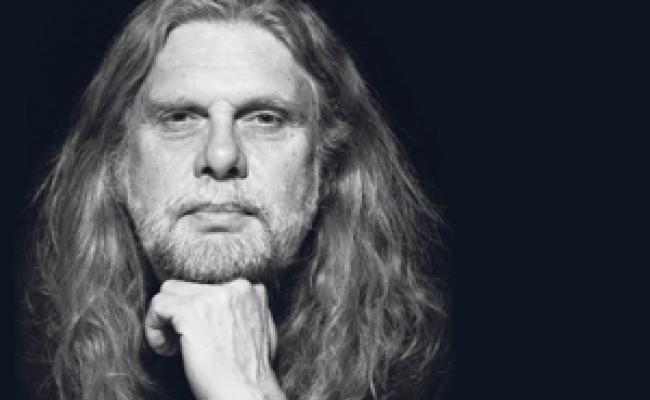Arne O. Holm says When the War Narratives Are Not Corresponding, It Demands More From Us and Jonas
Norwegian Prime Minister Jonas Gahr Støre should be meeting the people more frequently, preferably through more press conferences. (Photo: Hilde-Gunn Bye)
(Commentary) “The war has entered a more serious phase and has moved closer to us,” said Norwegian Prime Minister Jonas Gahr Støre at a press conference the other day. The message holds gravity and is difficult to convey. Partly because the government’s narratives are not corresponding.
The Prime Minister is undoubtedly correct in his description. The main message was about Russia intruding into Norway through what is called hybrid warfare. It is about the fear of attacks on critical infrastructure, like oil and gas installations at sea and on land. It is about Russians that, with the help of drones, perhaps are spying on Norwegian soil. Ultimately, it is about movements in Russia’s large arsenal not far from the border towards East Finnmark.
A difficult balance
The descriptions are meant to reassure us, but also make us aware of the looming dangers. It is difficult to balance.
And I am not sure the authorities are successful.
Right now, drones appear to be one of the most important tools for Russian citizens. At one point, seven Russians sat arrested in Norway for illegally filming and photographing. Large resources are to be utilized in monitoring drone traffic. The drones are described as instruments for mapping, but also a means of creating unrest in the population.
We are back to where we were before the war.
This is not the authorities’ biggest problem, but in all its simplicity and drama, this is the picture of an aggressive hybrid war.
The message is so effective, that the Western Norwegian Police District had to step in and ask for fewer drone observations. By then, they had received 42 messages in one day. Over the past few days, most of the Russian drone pilots have been released from custody. It must mean that the police believe that they actually were tourists, as they claimed, and not spies.
Back to normal
While Jonas Gahr Støre held a press conference, the Chief of the Norwegian Intelligence Service Nils Andreas Stensønes, gave an interview to VG. His message is also a serious one, but he puts the current situation into an interesting historical context:
“After the invasion of Ukraine, we saw a lower level of activity in the intelligence threat, but it has increased again. We are back to where we were before the war,” said Stensønes.
That does not mean that the situation does not demand extreme vigilance from the intelligence service and others. It just means that we are in a political and intelligence area that is familiar to Norwegian authorities.
An equal understanding of reality.
When we travel into Easter Finnmark, we can also see how difficult communication between authorities and the population can be. The experienced Chief of Police in Finnmark, Ellen Katrine Hætta, met resistance from both politicians and businesses after being interviewed by Dagens Næringsliv.
The challenge, I believe, was that Hætta spoke with both professional clarity about the security threat from Russia, but also moved into a political landscape when she wanted to close the fishing ports in Finnmark for Russian fishing vessels. In other words, she wanted to go further than the government thought was necessary.
Resistance in the North
People in Finnmark reacted to that. They reacted because the downsizing of the fish landings and shipyard industry would mean an immediate drop in the population in both Kirkenes and other places in the East. It is a business policy argument that also takes into account the security policy value of a strong population on the border with Russia.
In a recent interview with High North News, the Chief of Police emphasizes that she shares “the worry of the civil footprint in the North”.
Even the Chief of Police herself struggles with the recruitment to an agency that is obviously facing more demanding and complicated tasks in the future. That is quite illustrative of the situation.
It is crucial for the situation on the border to Russia that the authorities and the locals have an equal understanding of reality.
Out meeting the people
The government is currently struggling with support. Contrary to when Erna Solberg led the way in the fight against COVID, Jonas Gahr Støre is unable to gather support in a crisis with greater risk.
Many of us struggle with the same thing.
That does not mean that the government does not do a good job both nationally and internationally in all aspects of the war. But it obviously fails to convey the message from both demanding international meetings about the energy crisis, and the formidable capacity which is now being strengthened to meet the various challenges from Russia.
At a seminar in Kirkenes last week, the renowned Russia researcher Julie Wilhelmsen described the challenges as follows:
“Never before has it been as important and as difficult to assess Russia.”
She pointed to a Russia research which is politicized and in which the researchers are struggling to maintain a multidimensional view.
Many of us struggle with the same thing.
Perhaps Jonas Gahr Støre should learn a lesson from the pandemic. While it was at its most uncertain, the government held frequent press conferences. I believe that would have been wise also in today’s situation. Then, as now, it is about balancing concern and reassurance in the meeting with the population.
There is a big difference between living in Oslo and living in Eastern Finnmark. The war has increased the difference dramatically. That is also an important message that must be reflected in the authorities communication to us who live in the North, but not least from us who live in the North to the authorities.
Also read
This commentary was originally published in Norwegian and has been translated by Birgitte Annie Molid Martinussen.


